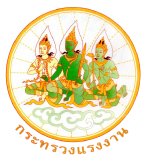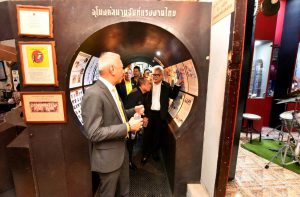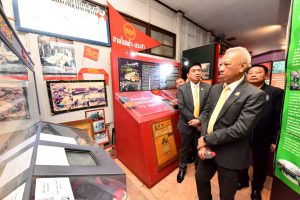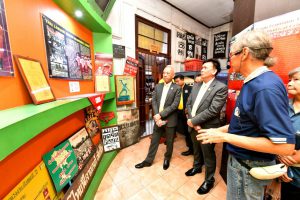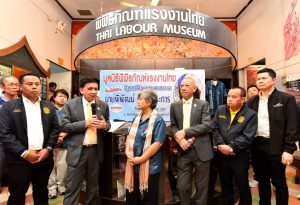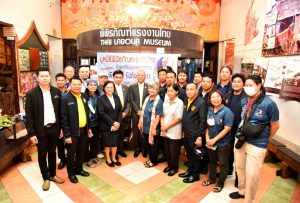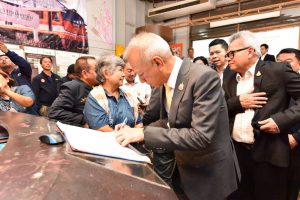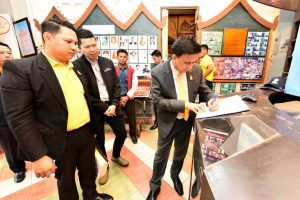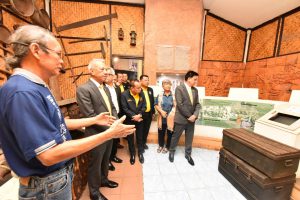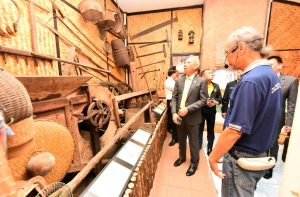On July 31, 2024, the Labour Minister, Mr. Phiphat Ratchakitprakarn, visited the Thai Labour Museum and provided policies to the executives of the Thai Labour Museum Foundation. The Secretariat to the Labour Minister, Mr. Aree Krainara, the Ministry of Labour’s Spokesperson, Mr. Phumiphat Mueanchan, the Permanent Secretary of Labour, Mr. Pairoj Chotikasathien, and the Ministry of Labour’s Inspector-General, Mr. Somphon Kwangkaew, joined the visit at the Thai Labour Museum, Makkasan Industrial Estate, Makkasan Road, Ratchathewi District, Bangkok.
Mr. Phiphat said that the Thai Labour Museum Foundation came to meet him at the Ministry of Labour on June 27 to introduce the Thai Labour Museum and discuss the operations to develop and create benefits for workers and society. Today, the Labour Minister and the Ministry of Labour’s executives paid a visit to the Thai Labour Museum and provided policies to the executives of the foundation. The Thai Labour Museum is in the Makkasan Industrial Estate, which was established on December 1, 1991, by labour organizations, NGOs, labour scholars, historians, and archivists, who jointly agreed to establish the Thai Labour Museum as a place to collect and display the stories of Thai workers.
“I would like to invite students, workers, and the general public and foreigners who love traveling to learn about the Thai workforce to visit the Thai Labour Museum,” said Mr. Phiphat.
The Thai Labour Museum was established to exhibit the stories, history, living conditions, and work of labourers. It is to be a place for studying, researching, collecting and disseminating knowledge about the history of Thai labour. It also serves as a center for collecting information, documents, books, audio tapes, and videotapes about Thai workers for public use and is a labour arts and culture center that organizes activities for labourers and the public. Currently, there are seven exhibition rooms: Room 1: Forced Labour, Serfs, Slaves and the Opening of the Country; Room 2: Chinese Coolies, the First Generation of Contract Labourers; Room 3: National Reforms during the Reign of King Rama V; Room 4: Workers and the Change of Government in 1932; Room 5: From World War to the Cold War; Room 6: Labour Arts and Culture Room, Chit Phumisak; and Room 7: From the October 14 Era to the Economic Crisis.
At present, the Thai Labour Museum is located in the Makkasan area. The significance of this Labour History Museum will remain valuable in Thai society.


